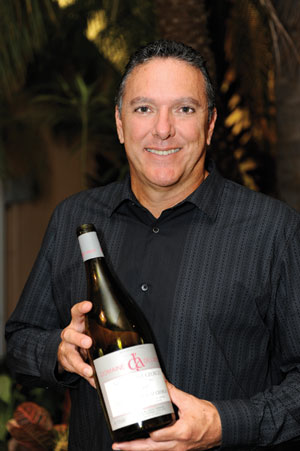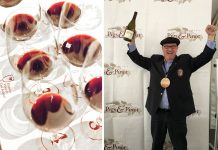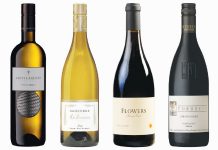Story by Charles Fredy
 Last issue, we explored some of the secrets a bottle’s back label can reveal: the wine’s varietal components, its flavor profile, and whether the grapes came from a wide region (with variable quality) or a single district or vineyard (which usually indicates better quality).
Last issue, we explored some of the secrets a bottle’s back label can reveal: the wine’s varietal components, its flavor profile, and whether the grapes came from a wide region (with variable quality) or a single district or vineyard (which usually indicates better quality).
The front label also offers a clue: the year the wine was produced. Knowing the vintage can help you select a superior wine, and sometimes uncover a real value. For example, a 2005 cabernet sauvignon you find at the store could be rated higher than the 2006, but because it’s been on the shelf longer, it’s been discounted to sell. Even if the two vintages are similarly rated, the 2005 may be a better value simply because it has aged longer. Big, bold reds like cabernet sauvignons have higher levels of tannin, and benefit from the extra time in the bottle that allows the tannins to soften.
Older isn’t always better. With some exceptions—white Burgundy and high-quality riesling, for example—whites generally don’t age as well as reds. Unless you’re experienced, look for whites in light hues of green, straw or yellow.
When you’re ready to venture beyond the label, a good place to start is with ratings from reputable sources such as Connoisseurs’ Guide, Wine Spectator, Wine & Spirits, and Wine Enthusiast. Experts rate wines by class, category, price, varietal or region. A $15 bottle with a ninety-point rating is probably better than a comparably priced wine that rates an eighty, but it’s not likely to be as good as the wine that has a ninety-point rating and costs $75.
Some rating sources are more liberal than others. One expert may be an aficionado of Old World selections that are leathery and mineral-driven, while another invariably prefers a big and fruity wine. What’s a budding oenophile to do?
Look for producers who are tried and true. Any vintner can get a good rating one year. I choose the ones who do so all the time.
And remember that you are the best judge of what you enjoy, so use the experts as a guide, not an absolute. Experiment with recommendations from different rating sources, and see which ones you most agree with. Seek advice from wine-shop staff, who will have selected or tasted many of the wines themselves. Taste different wines as often as you can. And enjoy the journey.
Here are some wineries I’d recommend:
+ Far Niente Winery, Napa Valley, California
+ Frogs Leap Winery, Rutherford, California
+ Grgich Hills Estate, Napa Valley, California
+ Charles Smith Wines, Walla Walla, Washington
+ Billecart-Salmon, Champagne, Mareuil-sur-Ay, France
+ Weingut Selbach-Oster, Mosel, Germany





